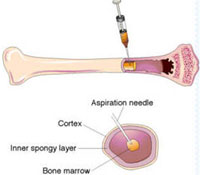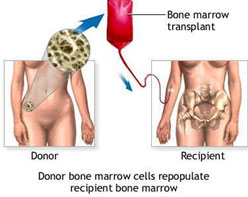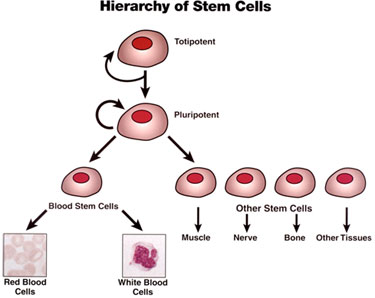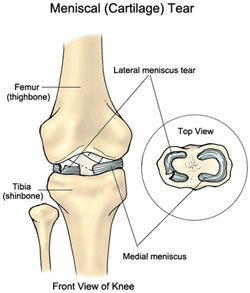|
|
Transplant surgery may involve thoracic organs or abdominal organs, but also corneas, meniscus, tracheas, bone marrow, few sharing below
Transplant Surgeries
Bone marrow
 Bone marrow is a special, spongy, fatty tissue that houses stem cells, located inside a few large bones. These stem cells transform themselves into white and red blood cells and platelets, essential for immunity and circulation. Anemia, leukemia, and other lymphoma cancers can compromise the resilience of bone marrow. Bone marrow transplants are a growing treatment for these conditions of the lymphatic system that can't be otherwise cured. Bone marrow is a special, spongy, fatty tissue that houses stem cells, located inside a few large bones. These stem cells transform themselves into white and red blood cells and platelets, essential for immunity and circulation. Anemia, leukemia, and other lymphoma cancers can compromise the resilience of bone marrow. Bone marrow transplants are a growing treatment for these conditions of the lymphatic system that can't be otherwise cured.
Our skull, sternum, ribs, pelvis, and femur bones all contain bone marrow, but other smaller bones do not. Inside this special tissue, immature stems cells reside, along with extra iron. While they are undifferentiated, the stem cells wait; until unhealthy, weakened, or damaged cells need to be replaced. A stem cell can turn itself into a platelet, a white blood cell like a T-cell, or a red blood cell.
This is the only way such cells get replaced to keep our body healthy.
 Platelets always circulate in our bloodstream, looking for tiny tears in blood vessels where blood might leak out, like a paper cut. They accumulate in such cuts during clotting. Red blood cells carry fresh oxygen from the lungs to all the cells that need it, and then carry away the unneeded carbon dioxide. White blood cells are immune responders that combat foreign microorganisms. Those invaders might cause infection, so white blood cells help produce antibodies that keep the invaders from causing damage. Platelets always circulate in our bloodstream, looking for tiny tears in blood vessels where blood might leak out, like a paper cut. They accumulate in such cuts during clotting. Red blood cells carry fresh oxygen from the lungs to all the cells that need it, and then carry away the unneeded carbon dioxide. White blood cells are immune responders that combat foreign microorganisms. Those invaders might cause infection, so white blood cells help produce antibodies that keep the invaders from causing damage.
These three types of cells, and their associated functions, are obviously incredibly important to our entire body. That's why bone marrow tissue, as part of the lymphatic system, fights pathogens like fungi, bacteria, and viruses. Other diseases, often incurable, pose threats to bone marrow, incapacitating its ability to turn stem cells into essential cells. Leukemia, Hodgkin's Disease, and other lymphoma cancers and tumors damage bone marrow and destroy stem cells.
Bone marrow transplants, the leading treatment for such conditions, begin with chemotherapy that eliminates the compromised bone marrow. If you can locate a matching donor, frequently a family member, their bone marrow is extracted using a needle and injected into your bloodstream. Hopefully, the donation will "take," and make its way into the central shaft of larger bones to restore stem cell function.
Stem Cells
 Stem Cells are special cells in multicellular organisms which are capable of differentiating into a wide range of cells as needed. In other words, the cells themselves are not specialized like blood cells, nerve cells, and so forth, but they can make specialized cells to form an embryo or repair damage to an adult organism. This property has suggested that stem cells could be extremely useful in medical treatment, and many nations have established stem cell funding to explore the possibility of research and development with stem cells. Stem Cells are special cells in multicellular organisms which are capable of differentiating into a wide range of cells as needed. In other words, the cells themselves are not specialized like blood cells, nerve cells, and so forth, but they can make specialized cells to form an embryo or repair damage to an adult organism. This property has suggested that stem cells could be extremely useful in medical treatment, and many nations have established stem cell funding to explore the possibility of research and development with stem cells.
All multicellular organisms actually start out as a cluster of stem cells. As the stem cells divide and multiply, they differentiate themselves to make organs, muscle, bone, and so forth until a complete embryo is formed. Adults also have stem cells, although their precise origin is not fully understood. These adult stem cells trigger in response to serious injury to replace damaged tissues.
There are three types of stem cells. Embryonic stem cells are stem cells taken from an embryo. Cord blood stem cells come from the umbilical cord, which is rich in stem cells because it is of fetal origin. Adult stem cells are also known as somatic stem cells, and they are found in a range of locations around the adult body. The exact science and distribution of adult stem cells is still a topic of intense research.
In order to be considered a stem cell, a cell must possess two properties. The first is that the cell must not be specialized for a specific action, but it should be capable of generating specialized cells. In addition, stem cells can replicate themselves numerous times with errors, a process known as proliferation. Stem cell research is focused on exploring this unique properties, and scientists hope to some day be able to exploit stem cells, stimulating them to grow organs for people who need them, for example.
Research on stem cells is controversial in some parts of the world. Embryonic stem cells could only be harvested by taking an embryo until 2006, when scientists began to prove that stem cell lines could be created without sacrificing an embryo. Since some people are uncomfortable with the thought of killing an embryo, this issue raised a great deal of concern among many communities. Other critics are concerned that stem cell research may stray into the realm of cloning, and many communities oppose cloning of human beings, for a range of reasons. Most governments have focused on creating clear and understandable legislation about stem cell research, in the hopes of harnessing the immense potential of stem cells without causing controversy.
 Meniscus Meniscus
The Meniscus is cartilage tissue that protects and helps promote flexibility in the human knees. The meniscus has a half moon shape, and there are two in each knee. In plural, the meniscus is referred to as menisci. Both are between the tibia, also called the shinbone, and the femur or thighbone.
Menisci are further classified by their location. The medial meniscus is on the inside of the knee, supporting the femurís rounded edge in the inside of the thigh. The lateral meniscus is on the outside of the knee supporting the outside rounded part of the femur. The two act in concert as shock absorbers, so the weight of the femur does not smash into the smaller tibia. Both also are responsible for helping the knee to bend and flex without causing the bones to grind against each other.
The pressure of the femur causes each meniscus to look somewhat squashed. The curved part of the meniscus is toward the middle of the knee. The widest part of the meniscus sits at the outside of each side of the knee, as that is the area that needs the most cushioning. The inner part of each meniscus is made of liquid that helps lubricate the joints as they hinge and straighten.
Often when one refers to a knee cartilage injury, he or she is referring to a tear in the meniscus. In young adults, tears are most likely to be the result of traumatic injury during athletic games or practice. Suddenly twisting the knee can result in a small tear. Pain and swelling begins almost immediately, and a diagnosis of a torn meniscus is often confirmed with magnetic resonance imaging (MRI). Most tears are quite easily repairable with excellent outcomes after surgery.
Meniscus tears in older adults may be the cause of degeneration of the cartilage. As we age, the watery part of cartilaginous tissue tends to reduce. This type of injury caused by degenerative disease is sadly not reparable, though there may be some treatment, which can help reduce pain. Most doctors of Osteopathy recommend taking glucosamine once daily to increase and preserve joint health.
|